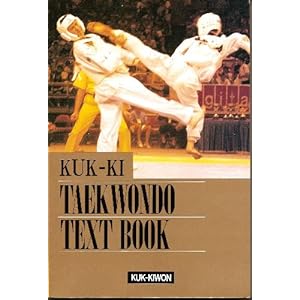Something very interesting yet odd.
I have attended 4 KKW seminars in recent years. The KKW course that just past being the last. One major difference, that everyone can agree on is the forms are slightly different than we have been practicing here in the U.S.
Probably the one that stands out the most is the narrower stances. what I, along with almost everyone else had to say at each seminar was, we were taught the big wide "balanced" stances... more of an ITF / Japanese based stance. (Ok maybe not as deep as some japanese stances, but you get the point...)
So tonight, While putting away my "NEW" KKW text book from the course, I pulled out my old KKW book. The first english edition printed in 1996.
looks like this:

And guess what....
NARROW STANCES!!!!! ALL OF THEM.
yes, the "one fist" wide front stance is in there. The short backstance and narrow horse stance too...
So... other than the rules and people... it appears the forms HAVEN"T changed much at all since I got this book in 96. Sure, we dont have to "jump" from the side kick to the other leg in sipjin... but funny enough, the one major difference I always seemed to get from each seminar was the stances and "how they changed"...
well it seems they are the same now, as they were in 1996 when this book was published!!!!
I have attended 4 KKW seminars in recent years. The KKW course that just past being the last. One major difference, that everyone can agree on is the forms are slightly different than we have been practicing here in the U.S.
Probably the one that stands out the most is the narrower stances. what I, along with almost everyone else had to say at each seminar was, we were taught the big wide "balanced" stances... more of an ITF / Japanese based stance. (Ok maybe not as deep as some japanese stances, but you get the point...)
So tonight, While putting away my "NEW" KKW text book from the course, I pulled out my old KKW book. The first english edition printed in 1996.
looks like this:

And guess what....
NARROW STANCES!!!!! ALL OF THEM.
yes, the "one fist" wide front stance is in there. The short backstance and narrow horse stance too...
So... other than the rules and people... it appears the forms HAVEN"T changed much at all since I got this book in 96. Sure, we dont have to "jump" from the side kick to the other leg in sipjin... but funny enough, the one major difference I always seemed to get from each seminar was the stances and "how they changed"...
well it seems they are the same now, as they were in 1996 when this book was published!!!!
